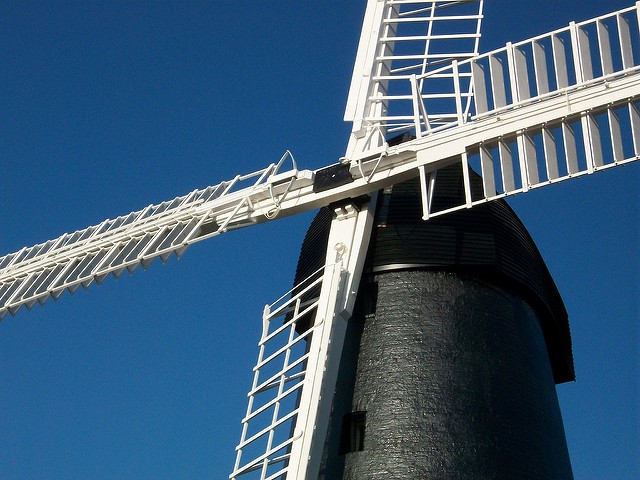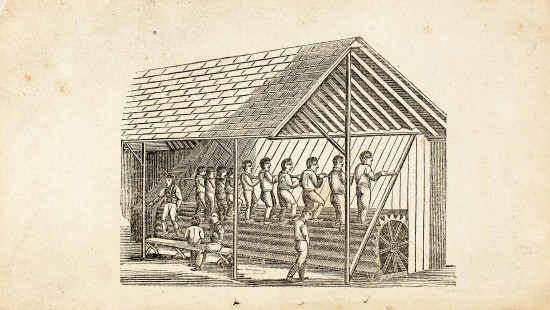When you visit Brixton Windmill on one of its open days, you will see a thick, heavy piece of canvas on display. This is a sample of sailcloth, which was originally hooked onto the frame of each sail to catch the wind.
In light winds the whole canvas would be unfurled; in stronger winds the sails would be “reefed”, or rolled back, so that only part of the surface was exposed (just like a sailing ship).
But if you look more closely at Brixton Windmill’s sails (or sweeps, as they were known south of the Thames), you’ll see that there are two different kinds.
The two trellis-like common sails, to which the sailcloth was attached, were simple, light, cheap and fairly efficient. This type of sail had been in use since medieval times. However, the disadvantage was that when the sailcloth had to be furled or unfurled, each sail had to be stopped in a vertical position and the miller, or a young apprentice, had to climb up to adjust the sailcloth. With four sails, this had to be repeated four times, which was rather inconvenient.
Brixton Windmill originally had four common sails, but in 1827 the Ashby family, who owned the mill, decided to replace two of them with a pair of patent sails. Patent sails have a series of small shutters, usually made of canvas, which can be opened or closed in one go – rather like a Venetian blind. They were invented by William Cubitt of Norfolk in the early 19th century.





